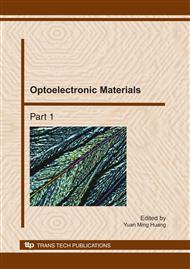p.572
p.576
p.580
p.584
p.588
p.592
p.596
p.600
p.604
Effects of Different Metal-Molecule Interface Conformations on the Electronic Transport in Molecular Junctions
Abstract:
Based on nonequilibrium Green’s function and first-principles calculation, we investigate the electronic transport of borazine molecule with different metal-molecule interface conformations, namely bridge and top site. The motivation is the variable situations that may arise in break junction experiments. Numerical results show that the current will be increased with the different adsorption sites; especially the enhancement of current is more obvious when molecule is located at the bridge site. Furthermore, a negative differential resistance under applied bias can be observed when the molecule is located at the top site. The mechanism of negative differential resistance is mainly induced by the resonance peak around the Fermi energy in top adsorption site.
Info:
Periodical:
Pages:
588-591
Citation:
Online since:
November 2010
Authors:
Price:
Сopyright:
© 2011 Trans Tech Publications Ltd. All Rights Reserved
Share:
Citation:


